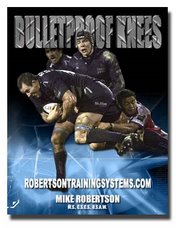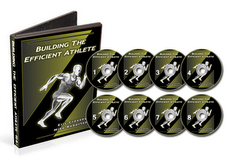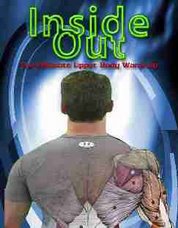The Extensor Reflex
I’ve had numerous e-mails coming in over recent weeks with regards to the extensor reflex, so I figured I better take an entire blog post to help better explain it.
The extensor reflex is a very natural thing. Try this first while sitting down.
Sit up tall and tuck the chin down so the neck is in a neutral alignment. From this position, slowly extend the head/neck further and further back. You’ll begin to feel tension in your upper thoracics, and as you continue to extend the head/neck, it will move all the way down into your lower erectors. This, in effect, is the extensor reflex – when you extend the head/neck, much of the posterior chain will follow.
Now, let’s take this a step further and examine a squat.
When you squat, the goal is to keep the chest up throughout the movement. Generally, lifters will do this by not only “puffing” the chest out, but extending the head and neck. In some regards this is great – it will help you maintain an arch in your back and typically keeps you from getting caved over in the hole. But what’s the downside here?
If you’re like the majority of the population, you probably suffer from some degree of anterior pelvic tilt. As you go down into the hole, if you continuously extend your head and neck, you increase your lordosis and assume a position of even greater anterior pelvic tilt. This situation has a tendency to take your glutes out of the lift, and make it a much more quad/low back dominant lift. You’ll see this quite often in powerlifters (myself included!).
Contrast this with the neutral head/neck alignment of Olympic lifters. By maintaining a more neutral neck position, the hips do the same – they stay more neutral as well. This position allows for more freedom into the hole, as well as more strength out of it via increased glute/hip drive.
One of the common questions I get is this: If your glutes are a hip extensor, aren’t they engaged via the extensor reflex?
The simple answer here is no.
Think of it like this; when you extend the head/neck and engage the extensor reflex, your dominant extensors will tend to do the work. In other words, your hamstrings, low back and possibly even your adductor magnus will take on the brunt of the workload. It’s not just the extensor reflex, but what’s going on at the pelvis as well. The greater the degree of anterior pelvic tilt, the harder it will be to engage the gluteals.
Here’s a small section from the text Starting Strength – if you haven’t read it yet, it’s quite possibly the premier text on lifting technique and a must buy. Purchase it at Elite Fitness Systems.
“If we realize that hip drive is critical to power out of the bottom of the squat, the rest is easy. Try this: Assume a good deep bottom position as described earlier, with the knees out, toes out, and heels down. Put the chin down slightly and look at a point on the floor five or six feet in front of you. Now drive your hips up out of the bottom, and make note of how this feels. Now do the same thing while attempting to look at the ceiling. You will discover an amazing thing – that chin-down (looking down keeps the chin down) with the neck in a normal anatomical position facilitates hip drive. It facilitates chest-up, the normal anatomical position for the thoracic spine under load, and this is also a good thing.
And correct chest position is an important factor in placing the lumbar spine in the correctly extended, slightly arched position. Correct lumbar position is essential for full utilization of the hamstrings and glutes out of the bottom, because when they are stretched more completely they can contract more completely and generate more power over a longer range (more on this later). So bad neck position sets up a series of bad positions that greatly diminishes the safety and effectiveness of the squat.”
I hope that gives you a greater understanding of the extensor reflex and how it works. Work on maintaining a more neutral neck alignment in all your lower body lifts and I wouldn’t be surprised to see some major progress in the weights you’re lifting!
Stay strong
MR
High Octane Corrective Exercise and Performance Enhancement | www.RobertsonTrainingSystems.com
Wednesday, July 18, 2007
Subscribe to:
Post Comments (Atom)








2 comments:
Hi Mike,
I'm curious if you can point me into the direction of where the "extensor reflex" is documented in the literature and/or text? I know that there is some connection between head position and the reaction of the spine, but I've not ever seen it documented outside of the "lay" literature as you've presented in your blog.
Thanks,
Chris
I originally discussed the topic with Dr. Erib Cobb of Z-Health fame (www.zhealth.net). I believe the more foundational stuff was discussed by Janda.
MR
Post a Comment